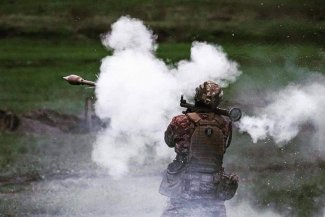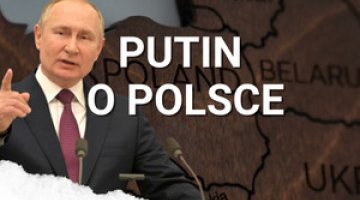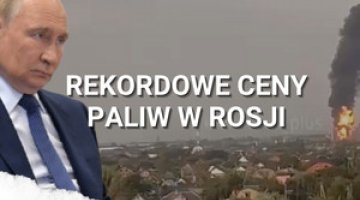Ukrainian counterattacks at Bakhmut. Day 442 of the war

On 9 May, Ukrainian forces struck at the rotating enemy subunits south of the Bakhmut-Kostiantynivka road, which led to their withdrawal from the area around the village of Stupochky to the eastern side of the Donets-Donbas canal. The Ukrainians entered the areas previously occupied by the Russians to a depth of about 2 km; two days later they launched simultaneous attacks in several directions in the vicinity of Bakhmut, concentrating the main weight of the attack in the area around the village of Ivanivske, south of the aforementioned Bakhmut-Kostiantynivka, road and between Bohdanivka and the village of Khromove north of the Bakhmut-Chasiv Yar road. They managed to push back the enemy nearly 2 km from the former road; however, the situation in the second strike direction remains unclear. According to some sources, the Ukrainian troops achieved a modest success, pushing the enemy back a few hundred metres; meanwhile according to others, they were pushed back to the positions they previously held.
The situation in the area of the Donets-Donbas canal south of the Bakhmut-Kostiantynivka road is also unclear. According to some sources, the Ukrainians succeeded in crossing it in the direction of Klishchiivka and occupied a patch of land on its eastern side; they also attacked Kurdiumivka, which lies on its eastern bank. On the other hand, communiqués from the Ukrainian General Staff on 11 and 12 May state that it was the invading forces that re-crossed the canal westwards and were repulsed in the area of Stupochky, which they had evacuated two days earlier. The Ukrainians also attacked northeast of Soledar, achieving some success in the Bilohorivka area of Donetsk oblast. In addition, some sources reported that Ukrainian troops were moving toward the line of contact and the Russian border in Kharkiv oblast, and were concentrating on the right bank of the River Dnieper in Kherson oblast.
The Ukrainian counterattacks did not affect developments in Bakhmut, where Russian forces made further advances in the western part of the city. The Avdiivka area, on the other hand, saw the most serious shift in favour of the aggressor in many weeks: the Russians entered the town from the southeast, and also approached it from the southwest. However, further Russian attacks in Marinka and south of it (in the Novomykhailivka area), as well as southwest of Kreminna, appear to have failed. On 9 May, in addition, the invaders make unsuccessful attempts to attack northeast of Kupiansk, as well as south-east of that town, on the border of Kharkiv and Luhansk oblasts. According to the Ukrainian General Staff, Russian activity was said to have declined in recent days to an average level of just over 40 attacks per day.
Russia’s latest missile strikes were again limited to the Ukrainian forces’ immediate hinterland. Their targets were Kupiansk, Sloviansk, Kramatorsk (twice), Kostiantynivka and Zaporizhzhia, as well as Avdiivka, Toretsk and Vuhledar. Russian artillery and aviation continued shelling and bombing along the lines of contact and in the border areas. Outside the combat areas, the right-bank part of Kherson oblast, with Kherson city, Nikopol and the Ochakiv area, remain the main targets of Russian shelling. Acts of Ukrainian sabotage was reported from Melitopol, while the occupying authorities also reported Ukrainian drone activity in the border regions of Bryansk (whose target was said to be a fuel depot), Kursk and Voronezh.
On 9 May, the Pentagon released details of a new $1.2 billion military aid package. These funds are to be used to purchase more air defence systems (earlier media reports suggested these would be Hawks) and ammunition for them, drone munitions, 155-mm artillery shells, and equipment to integrate launchers, missiles and radars with other Ukrainian air defence systems. The package also provides funding for satellite reconnaissance services. The following day, Czech president Petr Pavel announced that the Czech Republic would send Ukraine two batteries of post-Soviet Kub anti-aircraft sets; each one will include four self-propelled launchers, reconnaissance and guidance vehicles and a command post. Pavel also joined the Czech debate over the transfer of L-159 combat-training aircraft to Kyiv, saying that he would support such a solution.
On 11 May, British defence minister Ben Wallace confirmed that Ukraine had received MBDA Storm Shadow cruise missiles from his country. According to earlier reports by CNN, the Ukrainians have received several missiles with a range of 250 km, which can by carried by adapted post-Soviet aircraft. The EU’s High Representative for Foreign Affairs and Security Policy Josep Borrell gave details of an agreement to purchase munitions for Ukraine; this provides for the acquisition of 1 million 155-mm missiles and more than a thousand rockets (he did not specify which types). In turn Lloyd Austin, the head of the US Department of Defence, reported that Kyiv would receive Abrams tanks “at the beginning of autumn” (according to earlier announcements, this will happen in late 2023 and early 2024). The training programme for Ukrainian crews and maintenance is expected to be completed by then. On 12 May, Sky News reported that 31 Abrams on which Ukrainian soldiers will train have arrived in Germany from the US; it had previously been reported that these are not the tanks with which the soldiers will return to Ukraine. The training is expected to begin within two to three weeks. According to Ukraine’s defence minister Oleksiy Reznikov, Canada and Lithuania have started a joint project to train Ukrainian junior officers.
Also on 11 May, a spokesman for the Ukrainian Air Force Command, Colonel Yuri Ihnat, referred to reports that Ukraine’s air defence was becoming increasingly effective, currently standing at 90–100%. He announced that this percentage of shoot-downs only applies to selected types of cruise missiles and Iranian kamikaze drones, which the Ukrainians are able to neutralise. He recalled that Kh-22, Kh-31, Iskander and Oniks missiles, missiles from S-300 systems and guided aerial bombs, among others, are still outside the air defence’s range. Kyiv’s air defence is reportedly slightly more capable (as systems received from the West have been located there); however, the rest of the country is still relying on post-Soviet S-300 and Buk-M1 systems.
In an interview with the BBC on 11 May, President Volodymyr Zelensky said that the Ukrainian army needs more time to launch a counteroffensive while it waits for more supplies of armaments and ammunition. He added that the expected attack could be decisive for the fate of the war and change the course of the front line. He stressed that without significant retrofitting, Ukrainian forces could still conduct successful operations, but they will run the risk of suffering “unacceptably” high casualties. At the same time, he pointed out, a military advance could still prevent Russia from “freezing the conflict”. Earlier Oleksiy Danilov, Secretary of the National Security and Defence Council, announced that the president has not approved plans for a counterstrike, and that several options are being developed. In turn Ukrainian foreign minister Dmytro Kuleba stressed that the expected counteroffensive would not be Ukraine’s last. He also noted the importance of assistance from Germany because of that country’s “highly developed arms industry”, and noted that the defenders still needed artillery munitions, armoured vehicles and anti-aircraft systems.
Ukraine’s deputy defence minister Hanna Malar has stated that since the beginning of May, incidents of looting by Russian military personnel have increased in Zaporizhzhia and Kherson oblasts. Under the pretext of securing evacuation, they are stealing the local people’s cars and property, and warehouses containing high-prestige goods are being plundered. The goods looted are then being transported to Berdyansk and loaded onto a cargo ship, which then heads for occupied Crimea. Kyiv reports that out of fear of the counteroffensive, the occupiers are removing documents and property (including medical equipment) from southern Ukraine, while some collaborators and their families have already left the area.
Vladimir Putin signed a decree on 10 May to call up reservists of the Russian Armed Forces, National Guard and security bodies for periodic military training. It was not disclosed how many will receive the relevant summonses. British military intelligence announced that the Russian defence ministry has stepped up recruitment of Russian prisoners; some 10,000 convicts were recruited in April alone. The campaign is part of an effort to increase the size of the armed forces while trying to avoid a general mobilisation.
Commentary
- The Ukrainian counterattacks in the vicinity of Bakhmut occurred in a situation in which the defenders’ forces already controlled no more than the outer regions of the south-western part of the town (depending on sources, between 5% and 15% of its total area). It is therefore unclear whether the main goal of these operations – to unblock the supply routes, as appears to have been completed successfully in the Bakhmut-Kostiantynivka section – resulted from an intention to step up supplies, to rotate and reinforce the fighting units, or to provide them with a relatively orderly retreat. In any case, what they have achieved is still not enough: Bakhmut is still in operational encirclement, and all the Ukrainian supply routes are still within range of Russian fire. If Ukrainian forces continue the fight to hold their positions in the town and (potentially) recapture it, they will be forced to renew deblocking operations – just as they will if they withdraw from it with as few losses as possible. It is also still possible that the relief and recapture of Bakhmut is one of the goals of the planned counteroffensive. However, from the reports coming in from the combat zone, it appears that the defenders have not yet built up sufficient forces in the area around the town to do so.
- The Storm Shadow cruise missiles are the first type of weaponry donated by the West which could allow the Ukrainian army to effectively attack the deep Russian hinterland. The drones used so far (especially for attacks in Crimea) are much more susceptible to being shot down, and have been unable to do significant damage to Russian forces. All the Ukrainians’ previous successes (such as the sinking of the missile cruiser Moscow in April and the attack on Saki airfield in August 2022) resulted from their use of the few missiles they had managed to design and produce before the war, stockpiles of which are now most likely completely exhausted. In terms of firepower, the Storm Shadows are no different from the Russian Kalibers and US Tomahawks (all of which carry about 450 kg of explosive charge), but they have a much shorter range. They can fly up to 560 km (Ukraine has received an export version with a range of 250 km), while the American and Russian counterparts can travel 1500 km or more. This confirms that the West is still taking great care not to give Ukraine any armaments capable of striking targets deep inside Russian territory. The main shortcoming is likely to be the small number of missiles transferred; at this stage, that makes them more of a symbol than a factor in realistically enhancing Ukraine’s offensive capabilities.
- The Ukrainian government’s announcements on the launch of a counteroffensive are part of a consistent information policy designed to confuse the enemy about the location and form of a possible strike, and to obscure the situation on the front. The repeated vague announcements of launching a counteroffensive are also combined with constant appeals to Western partners to intensify the supply of arms and ammunition. At the same time, Kyiv is toning down speculation that the Russians could be defeated very quickly, while signalling that it will not give up further attempts to weaken the invaders’ forces.





